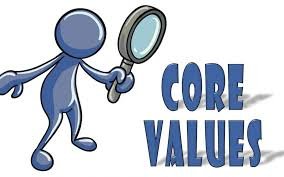At the executive level, communication isn’t just about what you say in a meeting — it’s about how you keep people informed, aligned, and confident in your leadership between meetings. Too often, executives assume others know what’s happening, only to discover peers feel left in the dark, teams are misaligned, or stakeholders are blindsided.
Proactive communication changes that. By intentionally sharing updates, progress, and decisions before people have to ask, you build trust, reduce friction, and create a reputation as a leader who keeps everyone aligned.
Why Proactive Communication Matters:
Prevents surprises. No one likes to hear about a decision at the last minute — especially a peer whose work is affected.
Builds credibility. Regular updates show you’re organized, transparent, and dependable.
Strengthens relationships. Communication is the currency of trust; sharing openly keeps peers and stakeholders on your side.
How to Communicate Proactively:
1. Share Regular Updates. Be a “super-communicator.” Send a short weekly or biweekly note highlighting:
What’s been completed
What’s in progress
What’s coming next and when
What roadblocks exist, and how you’re addressing them
Even a few bullet points help stakeholders see progress and priorities.
2. Ask Stakeholders What They Need. Don’t guess about the right level of detail — ask: “What’s the most useful way for me to keep you updated? High-level bullet points? Deeper dives on certain metrics?” People rarely complain about too much clarity.
3. Tailor to Your Audience.
Peers: Share how your work impacts theirs and invite them to collaborate.
Teams: Give context so they see how their work ladders up.
Executives: Keep it strategic — bottom-line impact, risks, and asks.
4. Model Transparency in Ambiguity. Even when the path forward isn’t clear, share what you know and what’s still uncertain. For example: “Here’s where we are today, here’s what could change, and here’s how we’re preparing for both scenarios.” Ambiguity handled openly still builds trust.
5. Use Multiple Channels. Leverage different formats: a short Slack note, a stakeholder newsletter, or a quick sync call. Communication isn’t one-size-fits-all — consistency across channels makes your leadership visible and credible.
Proactive Communication in Action
One VP I coached began sending a weekly one-pager to her peers and senior leaders: three wins, three priorities, and one ask. It took her 15 minutes to draft — and immediately changed how others perceived her. Instead of chasing her for updates, peers thanked her for clarity. Instead of being reactive, she was shaping the narrative of her team’s work. Another executive I coached heard from the board that they wanted more external engagement. In response, he added an “In the Field” section to his monthly update, spotlighting key conversations with partners, clients, and community leaders — reinforcing his role as a connector and ambassador for the organization.
Proactive communication is one of the simplest ways to strengthen executive presence and build trust across the system. When you share updates before people ask, tailor to different audiences, and communicate transparently even in ambiguity, you shift from being seen as “busy in your silo” to being recognized as a leader who drives alignment and confidence across the enterprise.
Reflection Question: How proactive are you in keeping peers, stakeholders, and teams updated — and where could more transparency make the biggest impact? Comment and share below; we’d love to hear from you.
Quote of the Day: “The most important thing in communication is hearing what isn’t said.” – Peter Drucker
The next blog in this series 7/9 will focus on impromptu readiness.
As a leadership development and executive coach, I work with leaders to sharpen their executive communication skills. Contact me to explore this topic further.
How do you proactively communicate?










